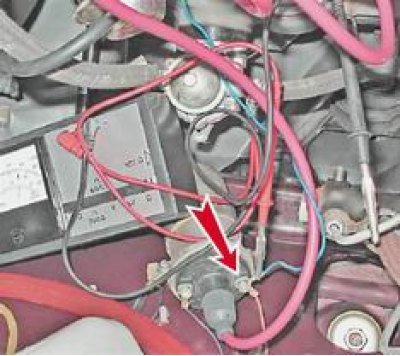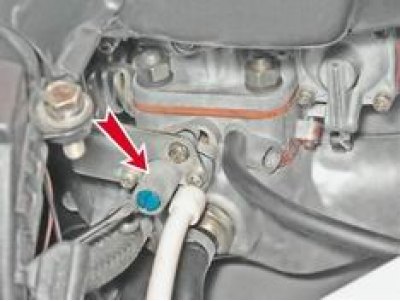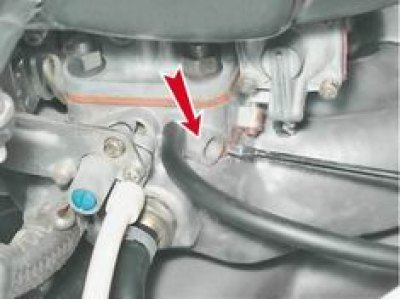The idling speed of the crankshaft should be in the range of 820-900 rpm, and the carbon monoxide content (CO) in exhaust gases within 0.5-1.2% (at 20°C and 760 mm Hg. Art.). Adjustment is carried out by adjusting screws of the composition (quality) and the amount of carburetor mixture. On the new carburetor, plastic bushings are pressed onto the screws, which limit the rotation of the quality screw within 50°, and the quantity - 90°. This is done in order to maintain factory adjustment during the warranty period.
Idling adjustment is carried out on a warm engine, with the carburetor air damper fully open.
You will need a car tester to make adjustments (multimeter with engine speed measurement function) and gas analyzer.
Execution sequence
1. We prepare the car for operations (see "Vehicle preparation for maintenance and repair").
2. Before adjusting, we check the ignition timing and, if necessary, adjust it (see "Ignition timing - check and adjustment").
3. We connect one probe of the car tester in the crankshaft speed determination mode to the output of the primary winding of the ignition coil, and the other to "mass".

4. Insert the gas analyzer sensor into the exhaust pipe and turn on the gas analyzer (see instructions for use).
5. We start the engine.
6. Turning the mixture amount screw with a slotted screwdriver, set the crankshaft speed to 820-900 rpm.

7. If the readings of the gas analyzer do not correspond to the norm, we adjust the composition of the mixture. Rotating slotted screwdriver ended screw (quality) mixture, we achieve the required concentration of CO in the exhaust gases. In this case, the frequency of rotation of the crankshaft will change.

8. By repeating the operations indicated in paragraphs 6 and 7, we achieve the required values of the crankshaft speed and CO concentration in the exhaust gases.
9. If it is not possible to make adjustment within the limits that allow restrictive bushings, remove them and make adjustments again.
10. To check the correctness of the idle speed adjustment, sharply press and release the pedal "gas". The engine should increase the speed of the crankshaft without interruption, and when the pedal is released, it should not stall.
